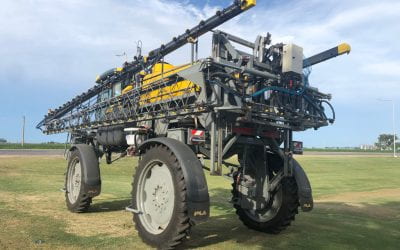Slow-Release Arsenic
On becoming (more) toxic and transnational
Arsenic is a geological and historical fact in Mexico and much of the Americas. As early as 1896, cotton planters used arsenic to kill cotton pests in Costa Chica, Guerrero in Mexico, (La Tierra, 1896). However, arsenic molecules exist in different forms and concentrations depending on geography, geology and proximity to empire. Many poor farmers encountered arsenic in the form of insecticides in the first half of the 20th century. The rise of modern export agriculture meant exposing workers laboring in the sprawling fields of plantations to the first generation of insecticides: raw white arsenic, Paris Green, lead arsenate and calcium arsenate.
The expansion of arsenic-intensive agriculture was gradual and incomplete. Some of the poorest farmers in Mexico might have never experienced arsenic because it was too expensive and export enclaves were too far away. Nevertheless, arsenic set the stage for a century of human-induced arsenic contamination. It is not always easy to detect arsenic precisely because it has lived so many quiet and quotidian lives in rural Mexico.
Arsenic is tasteless and odorless but carries a distinct geological and social history in Latin America. For around two billion years, before life existed and arsenic became toxic, volcanic eruptions lifted molten arsenic from the earth into the atmosphere and hydrosphere. The Ring of Fire, or string of volcanoes surrounding the Pacific Ocean, is also a chain of arsenic deposits.
Across geologic time, residual arsenic has been trapped in mountains and parent rock, slowly seeping into valleys and river basins on the eastern or American edge of the Ring of Fire.
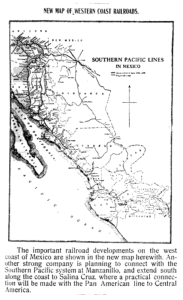
The Mexican Mining Journal Aug. 1909 p. 19
As geological events, settler colonialism and industrial mining quickened the release of more arsenic into ecosystems from Alaska to Argentina. This release reached new heights between the Mexican Revolution (1910-1920) and the Green Revolution (1943-1960s), when Mexico became both a principal source of U.S. arsenic extraction and a site to use arsenic-based insecticides.
Arsenic became a fixture in agriculture as millions fought for land in the Mexican Revolution. The gradual adoption of arsenic-based insecticides around the turn of the 20th century exploded in the early 1920s with arsenic mined in Mexico. Mexican arsenic was not chemically distinct from other sources of arsenic. However, U.S. chemists and agronomists transformed Mexican arsenic into a slow-release agrochemical, which served as a bedrock for the first generation of insecticides and chemical-intensive agriculture. It also impacted the nature of agriculture and agrarian reform in Mexico after the revolution. Like industrial nitrogen fixation—developed in World War I to produce nitrogen fertilizers—slow-release arsenic helped revolutionize agriculture in the early 20th century.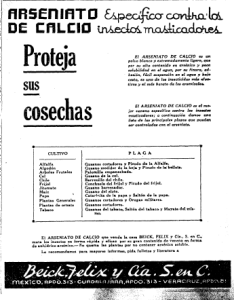
Slow-release arsenic accelerated the pace of arsenic use due to its delayed toxicity. Invented in California at the onset of the state’s agricultural boom in the 1910s, slow-release arsenic made arsenic-based poisons more profitable for farmers historically concerned with its herbicidal properties. The profitability of industrial-grade arsenic also helped convince smelter operators to collect and sell arsenic rather than release it into the environment. Like those smelter fumes before 1910, earlier forms of arsenic killed more plants than insects. Agronomists at the University of California, Berkeley changed that by engineering molecules of calcium arsenate, which delayed the release of arsenic’s toxicity until eaten by chewing insects or moistened by water. According to Steven Stoll, the agronomists’ formula was so effective that they started an insecticide company to feed an explosion of irrigated agriculture in the deserts of California and Arizona. Their biggest customers grew cotton, and in this decade, the U.S. Southwest was the new center for cotton production.
Mexican officials imagined the possibilities of the growing arsenic insecticide industry. After the revolution, the so-called Sonoran Dynasty presidencies of Álvaro Obregón (1920-1924) and Plutarco Elías Calles (1924-1928) hoped to expand capital-intensive agriculture in the states of the northwestern states of Baja California, Sonora and Sinaloa (Buchenau, 2011). Slow-release arsenic fit their goals, because, according to entomologists at the time, “[Mexico’s] West of Coast vegetable industry is virtually an extension of the vegetable industry of the southwestern United States” (Journal of Economic Entomology, 1925) Arizona and California landholders financed over ninety percent of operations across the border, which increasingly included cotton.
Mexican officials had a long history of collaborating with U.S. counterparts on pest management along border states. However, more often than not, collaboration was closer to control. U.S. policymakers were quick to blame Mexican practices and pests for problems. Rather than blame the expansion of the U.S. cotton economy into Mexico for encouraging the spread of cotton boll weevil (Anthonomus grandis) into the United States, U.S. officials blamed Mexican pests while simultaneously turning to Mexican mining for pesticides.
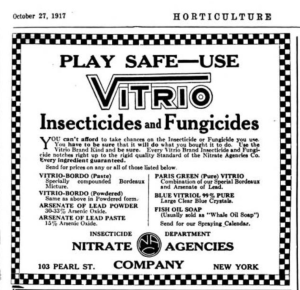 During the 1921 season, U.S. cotton planters lost a third of their harvest to cotton boll weevil. The archives are replete with newspaper headlines ridiculing “Mexican” cotton pests for the demise of U.S. cotton profits. With damages amounting to over $600 million, more planters turned to arsenic for help. The largest producers of raw arsenic were already U.S. companies operating in Mexico, like the American Smelting and Refining Company (ASARCO). These companies only imported 272 tons of Mexican arsenic to the United States in 1922, but this number skyrocketed to more than 10,000 tons in five years (Minerals Yearbook, 1938). For Mexican-owned smelters, such as the Compañía Mineria de Peñoles, refined white arsenic was often the only finished product for export. Only a handful of U.S. chemical manufacturers produced slow-release arsenic. However, in just a few years, cotton crises and mining helped Mexico and the United States surpass the British Empire as the largest producers and consumers of arsenic.
During the 1921 season, U.S. cotton planters lost a third of their harvest to cotton boll weevil. The archives are replete with newspaper headlines ridiculing “Mexican” cotton pests for the demise of U.S. cotton profits. With damages amounting to over $600 million, more planters turned to arsenic for help. The largest producers of raw arsenic were already U.S. companies operating in Mexico, like the American Smelting and Refining Company (ASARCO). These companies only imported 272 tons of Mexican arsenic to the United States in 1922, but this number skyrocketed to more than 10,000 tons in five years (Minerals Yearbook, 1938). For Mexican-owned smelters, such as the Compañía Mineria de Peñoles, refined white arsenic was often the only finished product for export. Only a handful of U.S. chemical manufacturers produced slow-release arsenic. However, in just a few years, cotton crises and mining helped Mexico and the United States surpass the British Empire as the largest producers and consumers of arsenic.
Locust infestations in the mid-1920s also normalized the use of arsenic to kill millions of insects. U.S. settler colonialism first adopted Paris Green to drive the North American locust into extinction in the late 19th century. During the occupation of the Philippines, U.S. military officials returned to this strategy with the addition of airplanes. In 1924, military planes armed with arsenic dusted large infestations of locusts with arsenic poisons. The following year, amid their locust infestations in southern Mexico, the Mexican military directly cites their U.S. counterparts as inspiring the use of arsenic in their aerial, anti-locust campaigns in Yucatán. The Guatemalan military soon followed suit to combat their locust infestations. Like arsenic and cotton production, arsenic and locust eradication was not unique to the Americas; scientific publications on locust boom from 354 in the 1910s to 843 in 1920s and 1,992 in 1930 (Roonwall, 1961); many articles suggested some concoction with arsenic to poison the swarms. If you had planes, all the better.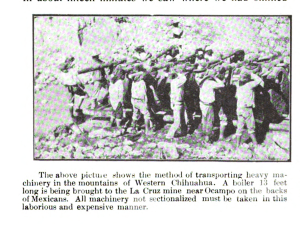
While the military adopted aerial dusting in Yucatán, Californian farmers tried it in Sinaloa. Commercial aerial dusting grew in popularity in the 1920s. As land ownership concentrated into fewer hands, planes to dust larger farms appeared in a few places in the United States. Geographer Brian Williams reminds us that early dusting companies were big business; Huff Daland Dusters became Delta Airlines. As was generally the case with U.S. agricultural modernization, Mexico was intertwined. Not only did nearly three-fourths of the arsenic used to make insecticides in the United States come from Mexico, but the use of agrochemicals in Mexico was becoming increasingly crucial to the expansion of U.S. agricultural enterprise in the Southwest. Prominent California agro-businessmen experimented with aerial arsenic dusting in Sinaloa and Sonora. In 1925, they contracted Huff Daland Dusters to dust a cocktail of chemicals on various crops: calcium arsenate for tomato bollworms, calcium cyanides for garden leaf hopper, and sulfur to control mildew on peas (Journal of Economic Entomology, 1926).
The results were disastrous ecologically and economically. They dusted slow-release arsenic in such high quantities that they often destroyed entire tomato crops. The dusters cited their “principal problem” was finding a suitable “method of cleaning up the field regardless of the effect on the plants.”
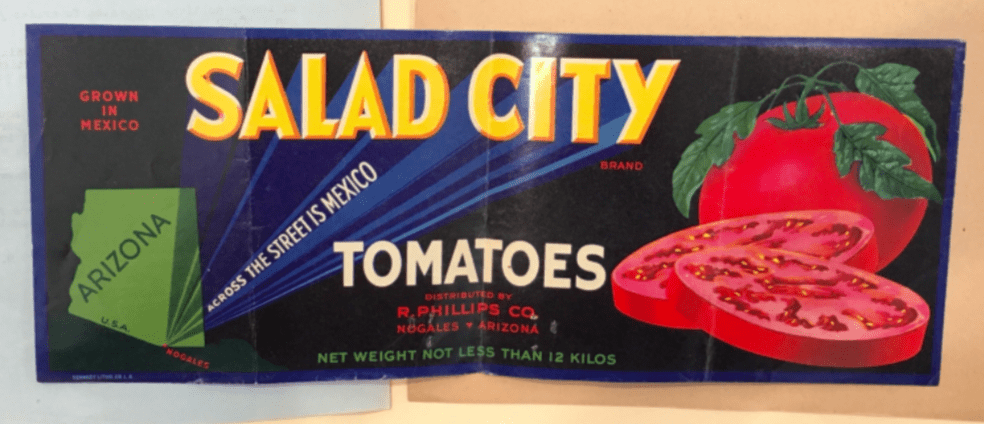
Cotton and racism were also central to the agrochemical transformation of the U.S. Southwest and northwestern Mexico. Since the late 19th century, U.S. cotton planters have looked to Indigenous communities such as Akimel O’odham (Pima) and Tohono O’odham in the Sonoran Desert (U.S. and Mexico) to study and extract methods of growing extra-long-staple cotton varieties in the desert, as was done in Egypt. As Jennifer Bess has shown, the famed and profitable Pima cotton variety was the product of a plantation on the Gila River Reservation on the Arizona-Sonora border. The Bureau of Indian Affairs and the Bureau of Plant Industry came together in 1907 to transform part of the Pima Indian School into a plantation to experiment with cotton. The planters built on the idea that Indigenous cotton growers had historically valued seasonal labor on cotton and sent for more migrant workers in Mexico and black sharecroppers in the U.S. South.
Cotton experimentation predicated on racialized labor traveled along the South Pacific Railroad that gradually extended into Arizona, Sonora, Sinaloa and Nayarit. In 1932, Anderson Clayton and Company (ACCO) worked with the Mexican government to test aerial arsenic dusting on various cotton species to see which ones grow best and with chemicals. This included Pima cotton and others, which later spread across northern Mexico in the 1930s and 1940s. By the height of the Green Revolution in the mid-1950s, ACCO had become the largest cotton producer in the world, harvesting millions of bales in Mexico and Brazil (Panorama Económico Latinoamericana, 1966).
Agrochemical development from and in Mexican subsoils shaped a Green Revolution. By the mid-1930s, U.S. manufacturers had enough surplus arsenic to export thousands of tons of calcium arsenate and lead arsenate to nearly a dozen countries in Latin America. More than three out of every four arsenic products manufactured in the United States—from glass to medicine and insecticides—originated in Mexican subsoils. The same is true for the insecticides sent to plantations in Brazil, Argentina, Colombia, El Salvador and many more places. Mexican-origin arsenic helped the wealthy, often foreign, planters justify the technocratic expansion of plantations. U.S. and Mexican government officials built on the legacies of borderlands agrochemical development in the Mexican Agricultural Program (MAP) in Sonora in 1943. With this chemical-intensive model secured, U.S. officials transported it across Latin America and eventually the world. What we call the “Green Revolution” today started as MAP.
The transnational history of Mexican arsenic and cotton informed how, when and where MAP and the Green Revolution took place. The slow-release arsenic cycles that accompanied the toxic political economy of cotton helped give way to the toxic agricultural modernity. Agricultural workers in places like Sinaloa still carry an unequal burden of the dozens of non-arsenic-based chemicals manufactured in the United States. This brand of arsenic imperialism has left its distinct impression on the Americas, where hundreds of arsenic contamination zones impact millions of people every day. When hundreds of arsenic scholars met in Mexico City in 2006 for a conference on one hundred years of arsenic contamination in Latin America, they acknowledged the Ring of Fire and its geological impact. However, they also highlighted the history and persistence of arsenic insecticides as the second leading cause of arsenic-related illness in the region.
Jayson Maurice Porter is an environmental writer, Voss Postdoctoral Research Associate at the Institute at Brown for Environment and Society (IBES) and a Presidential Postdoctoral Fellow at the History Department at the University of Maryland, College Park. His research focuses on Mexican and Black environmental history, agrochemicals, food systems, environmental justice and racial ecologies in the Americas. Jayson also loves to design environmental literacy programs for young people and has with various institutions and universities, such as the Organic Center, IBES, the University of Michigan.
For further readings on insecticides and empire, consider picking up Before Silent Spring (Whorton, 1975), The Death of Ramón González (Wright, 1990), El oro rojo de Sinaloa (Frías Sarimiento, 2008) and Pollution is Colonialism (Liboiron, 2020).
Related Articles
Editor’s Letter: Agriculture and the Rural Environment
From agribusiness to climate change to new alternative crops, agriculture faces an evolving panorama in Latin America and the Caribbean.
Local “sweetening” of the Cocoa Commodity? Alternative Economies in the Peruvian Amazon
The road was nearly impassable again because of the rain.
Agro-technological Revolutions in Latin America
When we speak about a revolution in agriculture in Latin American history, most scholars rightly think of peasant revolts, land tenure struggles or commodification of crops, to name a few of the most salient themes.


